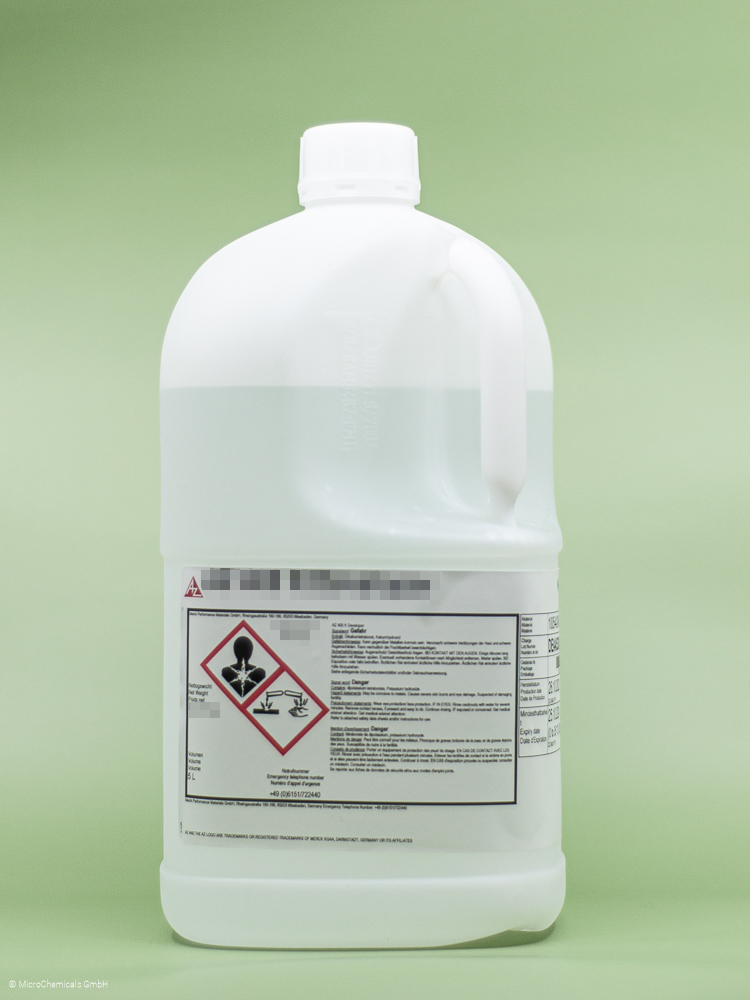MIF DEVELOPER
Basic chemistry of the developer
Aqueous alkaline developers
Positive varnishes and the negative varnishes we sell can be developed aqueous alkaline. The corresponding developers are based either on diluted sodium hydroxide or potassium hydroxide solution or an aqueous solution of the metal ion-free organic TMAH (TetraMethylAmmoniumHydroxide). Some developers contain chemical buffers against neutralisation byCO2 to extend the service life, surface wetting agents for puddle development or additives to remove coating residues that are difficult to dissolve in the developer .
Selection criteria for developers
Compatibility with photoresists
Not every photoresist can be developed residue-free with every developer. For example, the NaOH-based AZ® 351B is less suitable for the AZ® 4500 series than KOH- or TMAH-based developers, while the AZ® 111 XFS requires the AZ® 303 as a developer. If there is a risk of unintentional partial exposure of nominally dark resist areas via scattering, diffraction or reflections when processing negative resists , the TMAH-based AZ® 2026 MIF can be used. This contains an additive for the removal of difficult to develop resist areas, which can also lead to a cleaner development image when developing positive resists, but at the expense of a higher dark removal.
Metal ion-containing or metal ion-free?
Developers containing metal ions such as the NaOH-based AZ® 351B or the KOH-based AZ® 400K are generally much cheaper than metal ion-free TMAH-based developers, with no fundamental difference in their performance or capacity. An important selection criterion for the optimal developer is therefore the question of whether metal ion-free development is required or whether metal-containing development is permitted. Freedom from metal ions is a condition, for example, if it is absolutely necessary to exclude the possibility of residual sodium or potassium ions from the developer on the substrate diffusing into the semiconductor substrate during subsequent high-temperature processes and influencing its electronic properties there as impurities.










